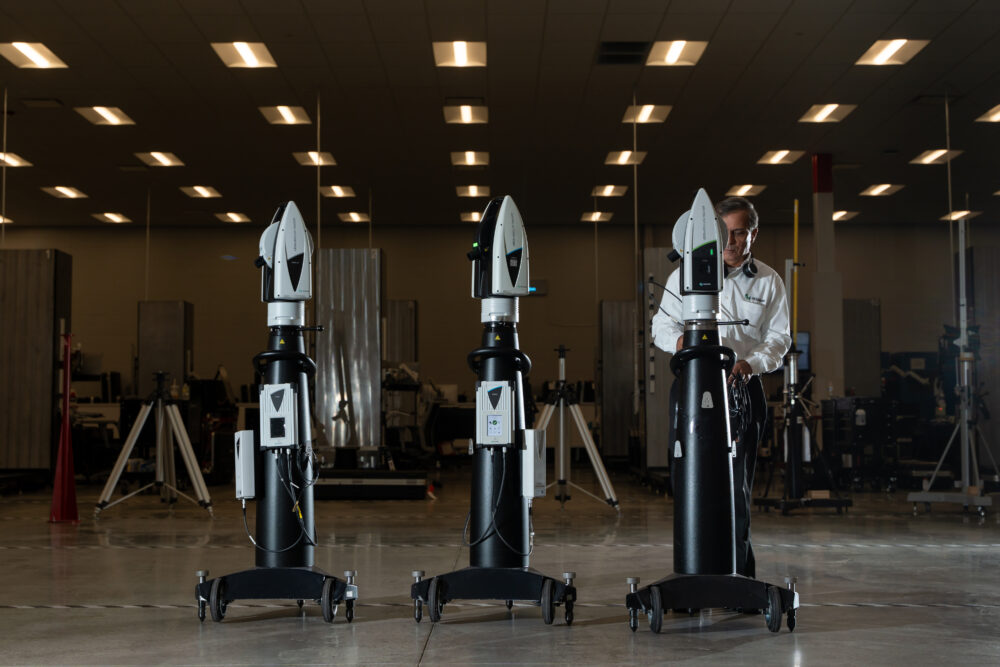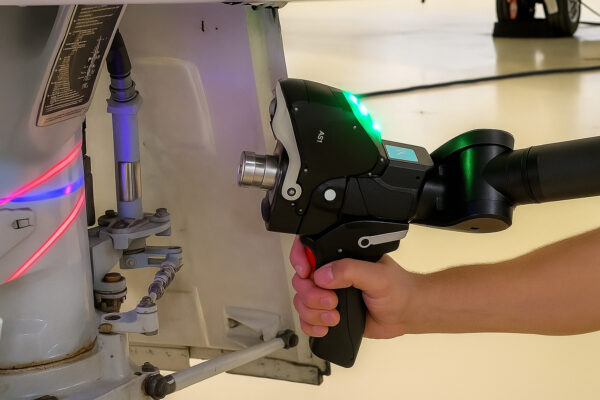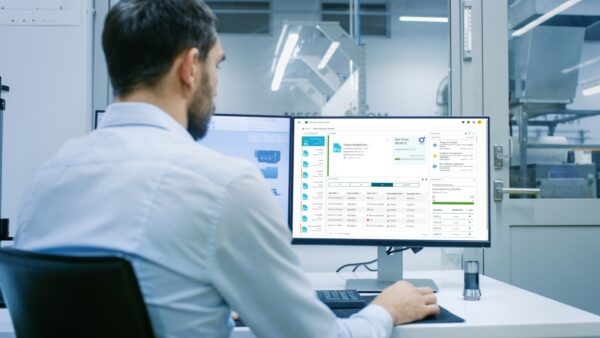Everything you need to know about laser trackers

Laser trackers are widely used in industrial quality assurance to provide precise measurements of large-scale objects. This guide explains the fundamentals of laser trackers, their practical benefits, and the key features that engineers often look for when researching this technology.
What is a laser tracker?
A laser tracker is a portable coordinate measuring device that determines the 3D position of a target by calculating two angles and a distance. These systems are commonly used in industries such as aerospace, automotive, and heavy manufacturing to ensure components meet specifications.
First introduced in the late 1980s and early 1990s, the basic operating principle of laser trackers has remained consistent. However, advancements in technology have made them more accurate, portable, and durable, making them an essential tool for modern metrology.
How laser trackers work
Laser trackers work by emitting a laser beam that reflects off a target, such as a retroreflector or a probe. The system measures the angles of the laser beam and the distance to the target to calculate its precise position in three-dimensional space.
This method allows engineers to inspect and measure objects with high accuracy, even when working with large parts or assemblies. Laser trackers are particularly useful for tasks that require precise alignment, inspection, or calibration.
Accuracy and measurement range
One of the main reasons engineers rely on laser trackers is their accuracy. Modern systems can measure within a few microns over short distances, making them suitable for applications where precision is critical.
Accuracy decreases slightly over longer distances, as it becomes more challenging to pinpoint the exact position of the target. However, even at ranges of up to 80 metres, laser trackers can maintain micron level accuracy, making them effective for large-scale projects.
Portability and ease of use
Early laser trackers were bulky and difficult to transport, limiting their practicality. Modern systems are designed to be portable, with lightweight components and compact designs that allow a single operator to move and set them up.
Many systems now come with carrying cases or backpack-style options, making it easier to transport them between sites. This portability has made laser trackers more practical for use in workshops, factories, or outdoor environments.
Durability and environmental adaptability
Laser trackers are often used in challenging environments, so durability is an important consideration. Modern systems are built to withstand rough handling and exposure to dust or moisture.
Many laser trackers include environmental monitoring features, such as sensors for temperature and humidity. These features help ensure accurate measurements by accounting for changes in environmental conditions.
![]()
Common applications of laser trackers
Laser trackers are used in a variety of industries and applications, including:
- Alignment and assembly: ensuring that components are correctly positioned during assembly processes.
- Inspection and quality control: verifying that manufactured parts meet design tolerances.
- Reverse engineering: capturing detailed measurements of existing objects to create CAD models.
- Tooling and fixture calibration: ensuring that tools and fixtures are accurately set up for production.
- Large-scale measurements: measuring objects that are too large for traditional coordinate measuring machines (CMMs).
These systems are particularly valued in industries where precision is essential, such as aerospace and automotive manufacturing.
Accessories and additional capabilities
Modern laser trackers are often equipped with accessories that expand their functionality. Probing tools allow users to measure areas that are difficult to access, while scanning systems enable the collection of detailed surface data.
These additional capabilities make laser trackers more versatile and allow them to be used for a wider range of measurement tasks.
Choosing the right laser tracker
When selecting a laser tracker, engineers typically consider factors such as accuracy, portability, and durability. The intended application will also influence the choice, as some systems are better suited for specific tasks, such as scanning or long-range measurements.
It’s also important to evaluate the software that comes with the system, as this can significantly affect usability and efficiency. Modern laser tracker software often includes features for data analysis, reporting, and integration with other tools.
The future of laser tracker technology
Laser trackers have come a long way since their introduction, and ongoing advancements continue to improve their performance and usability. Developments in areas such as wireless technology, automation, and scanning capabilities are likely to make these systems even more effective in the years to come.
For engineers and professionals in industries that rely on precise measurements, laser trackers remain an essential tool for ensuring quality and accuracy.
For quality that touches people's lives
Hexagon’s Manufacturing Intelligence blog is your go-to source for the latest manufacturing thinking. From expert commentary to industry perspectives, it’s designed to empower leaders and professionals to make smarter decisions, drive innovation and turn ideas into impact.





